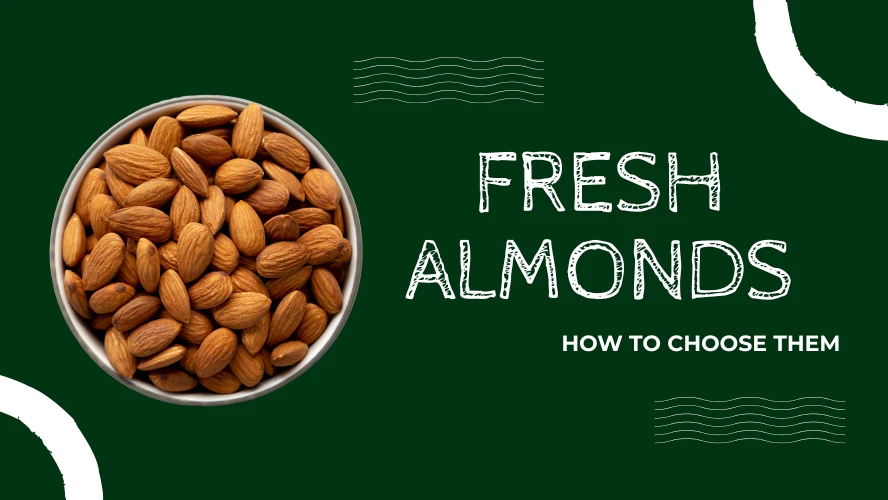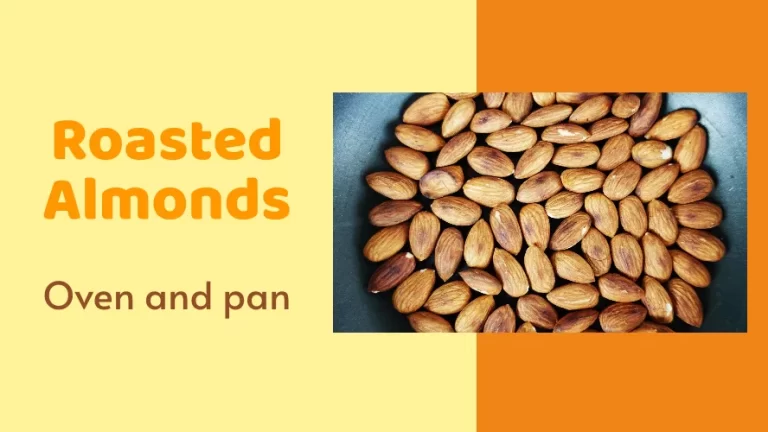The Ultimate Guide to Selecting Fresh Almonds

Choosing fresh and healthy almonds can significantly enhance your snacks, recipes, or even products like butter or flour. The difference in flavor and texture between fresh and old almonds can be pretty noticeable.
Fortunately, there are several indicators to ensure that almonds are in good condition. This guide will highlight some techniques to help you select the freshest almonds in your store or market.
Where to Buy Good Quality Almonds
Exploring various retail options to purchase almonds is critical to finding the highest quality and variety. Each option has distinct benefits and should reflect your culinary needs and preferences. Here are some options and their unique advantages:
- Supermarkets and grocery stores have easy access and a wide range of choices. These stores stock everything from raw to flavored almonds. They are ideal for convenience and variety.
- Health food stores specialize in organic and non-GMO almonds. These stores often obtain their products from specialized producers and offer unusual varieties not found in regular supermarkets.
- Online retailers give you a broad spectrum of choices from the comfort of your home. They allow easy price comparison and access to customer reviews.
- Farmers’ Markets and Local Farms offer the freshest almonds and support local agriculture. These almonds, often sold in their natural in-shell form, provide a rustic and authentic experience.
- Specialty stores stock high-end varieties, like Marcona almonds from Spain. These stores focus on premium quality and flavors, perfect for culinary enthusiasts.
How to Buy Almonds
Almonds come in two main types: in-shell and shelled. Each one has distinct benefits for different uses. Let’s see how to select the finest almonds, whether in their natural shell or ready for immediate use.
Selecting shelled almonds
Shelled almonds are ready for snacking, baking, cooking, and use in various recipes. Understanding how to select them will provide a tasty experience. Here are the most important factors to consider:
1. Check if the package is damaged
Proper packaging is crucial in preserving the quality of shelled almonds. Vacuum-sealed or airtight packaging is ideal, as it maintains the almonds’ natural oils and freshness. Be cautious of any packaging that seems damaged or allows air exposure.

The color of the package is also crucial as it blocks light exposure. Excessive light accelerates oxidation, which compromises taste and reduces shelf life. Opt for darker packaging to ensure better protection against light and maintain quality.
2. Look for signs of poor storage
How they are stored affects shelf life and flavor. Shelled almonds should be kept in a cool, dry place, away from sunlight. This type of storage ensures they retain their taste and texture.
A simple trick can give you a clue about storage. Look for condensation inside the sealed package. That condensation suggests storage in a warehouse with overly humid conditions, which can lead to mold growth and spoilage.
3. Evaluate the appearance
Inspect the almonds for uniform color and the absence of mold, moisture, cracks, or holes. Also, avoid those that appear excessively dry or feel unusually light. Remember, fresh almonds should have a healthy appearance and a firm feel.
4. Read the labels
Labels on almond packages can reveal a lot of helpful information. Check for details about the origin, processing methods, and harvest date. Nuts from a recent harvest and minimal processing are typically the most fresh.
5. Handling considerations when bulk buying
I always recommend buying shelled almonds in sealed bags to protect them against air and light. However, if you still want to buy them from bulk bins at your grocery store, pay attention to how they’re handled. Stores with high hygiene standards and frequent stock rotation usually provide fresher almonds.

Fresh vs stale almond comparison
I conducted a simple experiment to better illustrate some of the key points we’ve discussed, particularly regarding storage and appearance. Below is an image featuring two almonds from the same batch.

The one on the left was stored under ideal conditions, while the one on the right was intentionally left on my kitchen table, exposed to air, light, and humidity. The contrast between the two is striking; the almond stored properly maintains a robust and healthy appearance. However, the one left out displays clear signs of degradation, such as discoloration, dehydration, and wrinkles.
Which one do you think tastes better? Spoiler alert: the fresh one was far superior in flavor and crispiness.
Selecting in-shell almonds
In-shell almonds give you the unique pleasure of cracking them open. Additionally, their natural protective layer often means they have a longer shelf life.

However, the elements can still affect their quality and cause degradation over time. Therefore, it’s important to recognize specific signs of aging or deterioration in in-shell almonds.
1. Verify the weight
The weight of almonds inside their shells is one of the most reliable indicators of their quality. A good one should feel weighty for its size. This usually means that there is a healthy, intact nut inside. When picking them, compare their weight in your hand. Almonds that feel unusually light might be older or dried out. In these cases, they often lack the rich oils that contribute to their flavor and nutritional value.
2. Check the sound
The sound the almond makes inside the shell can also give you an idea of its condition. Gently shake it close to your ear and listen. A full and dense sound suggests a well-formed nut inside. Contrarily, a hollow or rattling sound may indicate that the almond is shriveled or broken.
3. Shell integrity
The state of an almond’s shell is vital, as it acts as a natural protector. Look for intact shells without cracks, holes, or mold. Shells in good condition suggest that the almond inside has been well-protected from environmental factors and pests.
Additional Tips on Selecting Raw Almonds
Selecting the best possible almonds also involves considering timing and adopting a strategic approach.
The best season to buy raw almonds
The harvest season is the optimal time for purchasing almonds. This period typically occurs between late summer and early fall. Buying almonds during these months often means accessing the freshest batches.
Start with small batches
If possible, sample a small batch before making a larger purchase. This is especially useful when buying in bulk. Tasting a few almonds can give you a good idea of the overall batch quality.
For sealed bags, consider purchasing only one of a specific brand. You can confidently return for a larger quantity if it meets your expectations.
A Word About Processed Almonds
When it comes to processed almonds, the two main types you’ll find are oil-roasted and dry-roasted. Each type has advantages and disadvantages, and understanding them can help you make a better choice.
Oil-roasted almonds
- Advantages: Oil roasting can enhance the nutty flavor of almonds and provide a lovely crunch. This method often results in a very pronounced taste.
- Disadvantages: The additional oil increases the fat content, which might not be preferable for those monitoring their fat intake. Also, some brands use cheaper oils that alter almonds’ natural flavors.
Dry-roasted almonds
- Advantages: Dry roasting involves heating almonds without added oil. That makes them a healthier option with a lower fat content. This method preserves the natural flavor of the almonds while still offering a pleasing texture.
- Disadvantages: Dry-roasted almonds may have a less intense flavor than oil-roasted ones and are usually less crunchy.
My suggestion: buy raw and roast them at home
If you want roasted almonds, consider buying them raw and toasting them at home. This approach allows you complete control over the roasting process and the ingredients you use. For example, you can select healthier oils than the ones present in packages of mass-produced roasted almonds.
Having full control over the processing ensures you get the healthiest and most flavorful outcome. If this approach intrigues you, be sure to check out our comprehensive guide on roasting almonds at home. It includes various methods, detailed instructions, and many tips to help you perfect your technique.
Final Thoughts
Embarking on this journey of almond selection reminds me of the importance of making informed choices about the food we consume. It’s a process that encourages mindful eating and cultivates a deeper connection with our food.
Remember the guidance we shared as you stand in the nuts section on your next shopping trip. Take a moment to appreciate and carefully assess each almond’s unique qualities. Whether evaluating the shell’s integrity, the weight, or the packaging, these small steps significantly impact how fresh your selection is.
Each almond you choose is an opportunity to bring the best flavor into your home. There’s a profound satisfaction in knowing that the almonds you’ve selected are the very best ones available, chosen with care and consideration.





